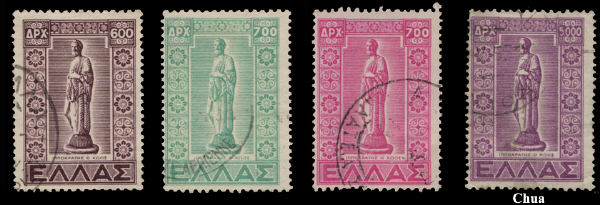|
Greece (1948)
Statues of Hippocrates
Although regarded as the Father
of Medicine, Hippocrates adhered to the traditional theories whereby disease
was interpreted in terms of a derangement
of one or the four of the humours without localization to a specific
organ. This concepts were to persist
for many centuries to come until the Renaissance.
In the Hippocratic system all the
humours could deflect themselves to the eyes. In acute infection these
were
drawn away by irritants applied
to the neighbouring region, cupping and vensection and even cauterization
with
a red hot iron over the temple
or scalp or deep incisions. Such was the ordeal suffered by St.
Francis of Assisi
when he presented himself for treatment
of his trachoma. Local application were not employed since they
increased the 'fluxious of the
humours'. For chronic affections, however, local treatment was used either
for soothing purposes, as milk
or the gall of goats, preparations of lead or myrrh or prescriptions o
fa more
irritating nature, as copper peroxide
or massage of the inner surface of the lids with wool (in trachoma) until
the
blood ceased to flow. |

